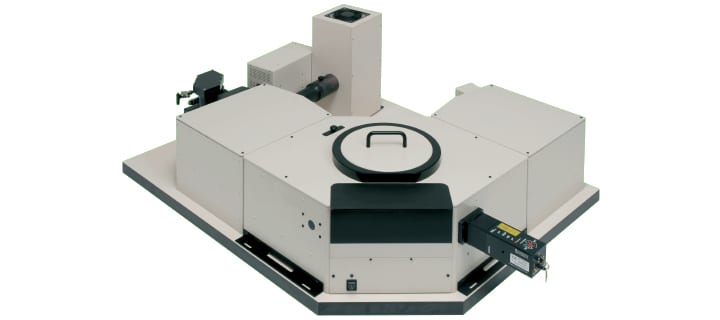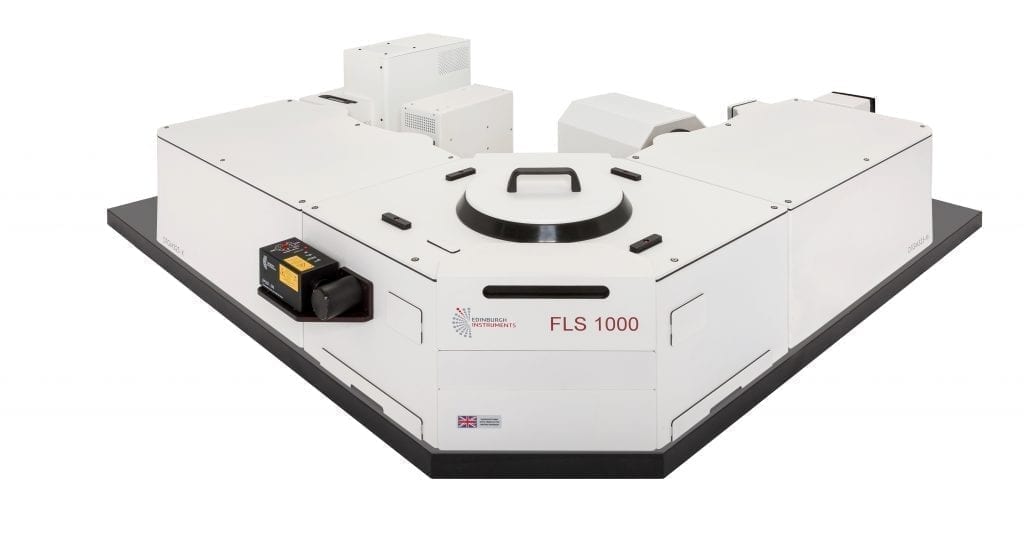Fluorescence Quantum Yields : Guide for the Measurement of Absolute QY of Liquid Samples
This Guide is designed to help you to determine the Fluorescence Quantum Yields (QY) of liquid samples using your FLS920 spectrometer and the Integrating Sphere accessory.

Fluorescence Quantum Yields (QY) measurements can be calculated using the relative method by comparing fluorescence parameters to a published quantum yield standard, or they can be determined by the absolute method in which the number of absorbed photons of a sample and the number of consequently emitted photons are measured. This guide explains how to use the sphere by means of the Absolute Quantum Yield method.
Specific measurement parameters are required to accurately and reliably perform quantum yield measurements. In instruments specifically designed with the sole purpose of measuring the Quantum Yield of fluorescence, these parameters are invariably fixed. The FLS920 is a flexible, research grade fluorescence spectrometer where the integrating sphere accessory for the measurement of fluorescence quantum yields is only one of its many applications. It is therefore very important that the measurement parameters of the FLS920 are fixed and consistent when QY measurements are being made.
Accurate and reliable Quantum Yield measurements require practice. They also can be quite time consuming. It is not only a question of having the proper instrumentation and having it correctly setup, but also a question of following the correct procedure.
There are two instrumental factors that can have dramatic effects on the fluorescence quantum yields measurements:
- Correction File
Ensure that the correct spectral correction file that is valid for the sphere, grating and detector is used for spectral correction of your raw (sphere) data. Using the wrong correction file is probably the biggest source of error in absolute quantum yield measurements. It causes systematic errors with resulting quantum yields being either too big or too small. - Detector Linearity
The number of recorded signal photons must be linear with the number of “available” photons. With the standard photomultiplier your system should be linear to about 2 million photons per second. However, to be on the safe side we recommend here to use an upper limit of about 1 million photons per second.
Liquid Samples are measured in standard (10mm x 10mm) quartz cuvettes with PTFE (white) stopper. You need ideally 2 identical cuvettes, one containing the sample, the other containing the solvent only (to be used as a blank). When preparing the cuvettes ensure that both sample and blank have the same filling height. 3ml of sample volume is ideal. Do not use less than 2ml.
You also need an absorption (UV-VIS) spectrometer (or the EI absorption accessory) to set up absorbance (OD) values of your sample.
Download the Full Fluorescence Quantum Yields Application Note
Guide for the Measurements of Absolute Quantum Yields of Liquid Samples
FLS920 for Fluorescence Quantum Yields Measurements
The FLS920 Fluorescence Spectrometer is now discontinued. However, we still fully support all upgrades, parts and replacements, servicing and maintenance for existing FLS920 systems and customers. The FLS1000 Photoluminescence Spectrometer has replaced the FLS920, and is able to measure fluorescence quantum yields, and much more. If you would like more information on upgrades to your existing FLS920 system, or would like to enquire about an FLS1000, simply contact a member of our sales team at sales@edinst.com.
Stay in Touch
If you have enjoyed this Technical Note, and want to be the first to find out about our research work, applications and product information, then why not sign-up to our infrequent newsletter via the red sign-up button below, or follow us on social media.









